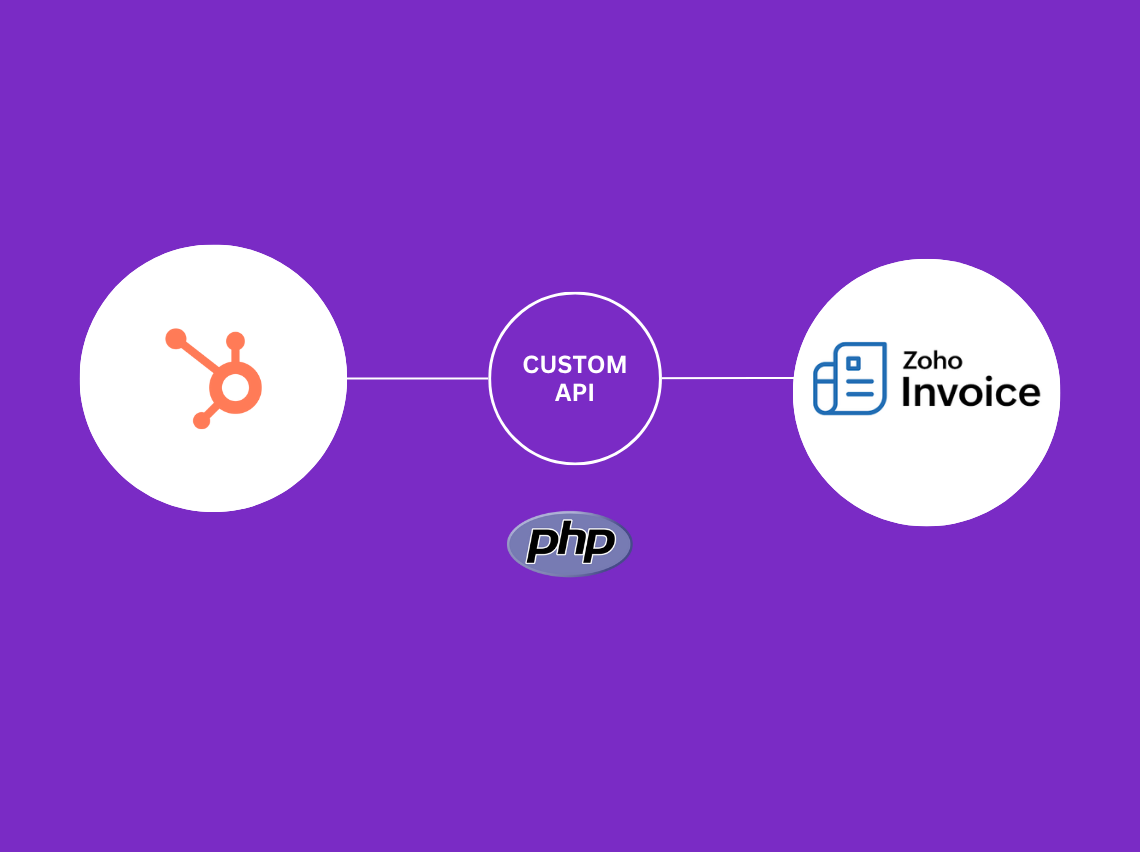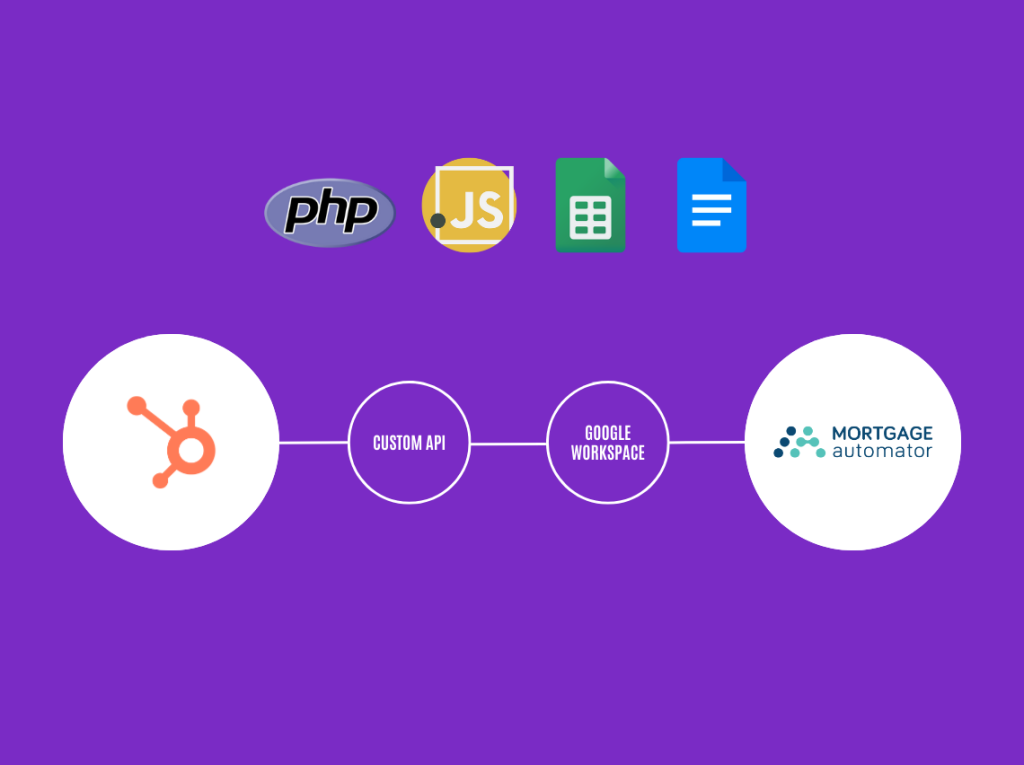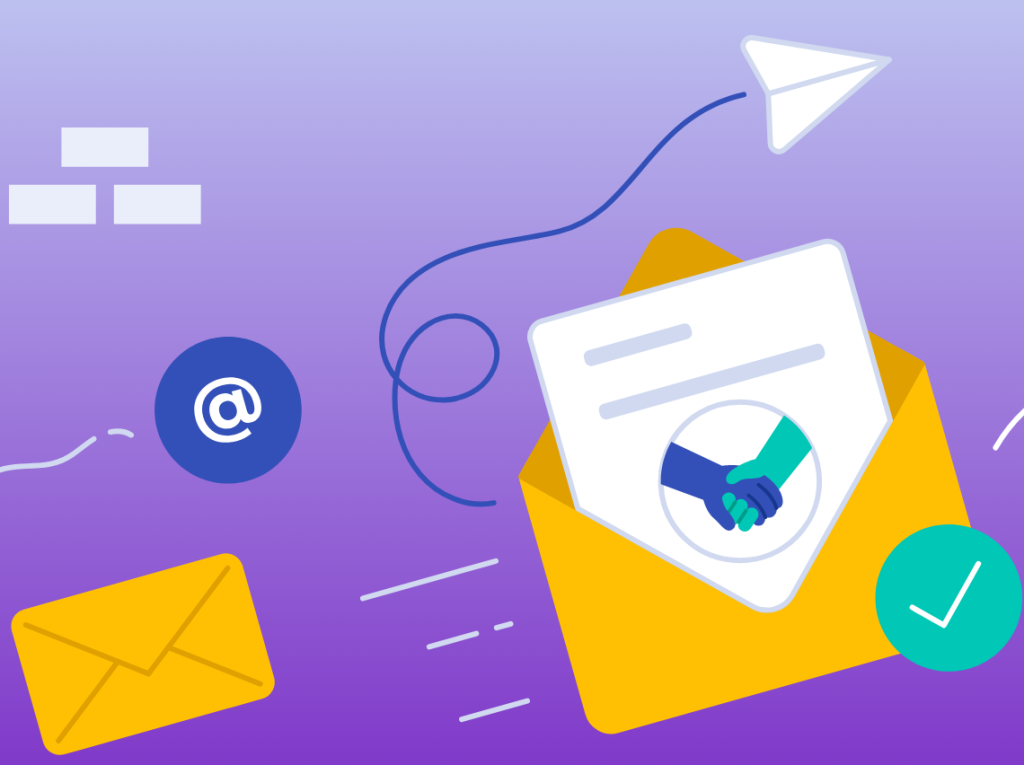Overview
VidyalayaERP, a SaaS-based school management software, was using HubSpot CRM (Free tier) to manage leads and deals, relying on WhatsApp and direct calls for communication and conversion. For financial operations, the client used Zoho Invoice to handle invoicing, payment collection (via Razorpay), and accounts reporting. However, the two systems operated independently, creating a gap in automation and efficiency.
Challenges
Hubspot offers features like quotes and invoices, but
- It lacks full accounting capabilities, especially on the free plan.
- HubSpot’s default invoice system is limited to Stripe, which is not ideal for Indian businesses.
- Zoho Invoice supports Razorpay and integrates with Zoho Books for GST-compliant billing, which the client preferred.
- A prebuilt HubSpot-Zoho integration exists in the HubSpot Marketplace, but:
- It supports limited default field mapping
- Custom mapping is only possible with Operations Hub Starter, a paid tier
- It lacks flexibility and control over invoice logic and formatting
Objective
Automate the invoicing process so that:
- When a deal in HubSpot is moved to the “Contract Sent” stage,
- A customer is looked up or created in Zoho Invoice,
- An invoice is automatically generated and emailed to the customer,
- All actions are logged for transparency and debugging.
Our Approach
We built a custom middleware hosted on our server to handle this end-to-end workflow with full control, using only the APIs from HubSpot and Zoho.
- Created a Private App in HubSpot
Configured with required scopes to access:- Deals
- Contacts
- Companies
- Line items
- Webhook subscriptions
- Webhook Listener Setup
Registered a deal stage change webhook that:- Listens for changes to the
dealstageproperty - Sends data to our custom middleware
- Listens for changes to the
- Data Fetch from HubSpot CRM (v3 API)
Using HubSpot’s API, the middleware:- Fetches deal details
- Retrieves associated contacts with personal details
- Retrieves associated companies with billing details
- Retrieves associated line items (products/services sold)
- Compiled a Structured Payload
Prepared a clean JSON payload including:- Customer name, email, address, company info
- Invoice line items (name, quantity, price)
- Customer Validation in Zoho Invoice
Checked if a contact with the same email already exists using Zoho’s /contacts endpoint. - Customer Creation Logic
If no match was found, a new customer was created in Zoho Invoice with:- Properly mapped fields from HubSpot
- Nested billing/shipping addresses
- Primary contact details
- GST & legal details
- Mapped Line Items to Zoho Product IDs
- Invoice Creation via Zoho API
- Built a full invoice payload with line items
- Enabled Razorpay payment gateway
- Allowed partial payments
- Sent Invoice Email Automatically
- Send the invoice to the customer
- Include custom subject and body content
- Attach the invoice PDF and payment link
| Metric | Before | After |
|---|---|---|
| Invoice creation | Manual, error-prone | Fully automated |
| Time per invoice | ~15 minutes | ~10 seconds |
| Invoice consistency | Varies by person | Standardized formatting |
| Payment integration | Not integrated | Razorpay supported |
| Data integrity | Partial | Accurate via mapping |
Key Takeaways
- A custom middleware solution offers flexibility and is more cost-effective than subscribing to HubSpot’s Operations Hub.
- By leveraging public APIs, we achieved enterprise-grade automation without third-party connectors.
- This integration is scalable, with logging and fallback mechanisms in place to avoid data loss or double entries.
Summary
This project demonstrates how a basic CRM and accounting setup can be transformed into a powerful, automated workflow with the help of a thoughtfully designed middleware. By leveraging the strengths of both platforms and connecting them through custom APIs, we enabled VidyalayaERP to save time, minimize manual errors, and deliver a smoother customer experience — all without the need for costly plan upgrades or restrictive third-party integrations.


